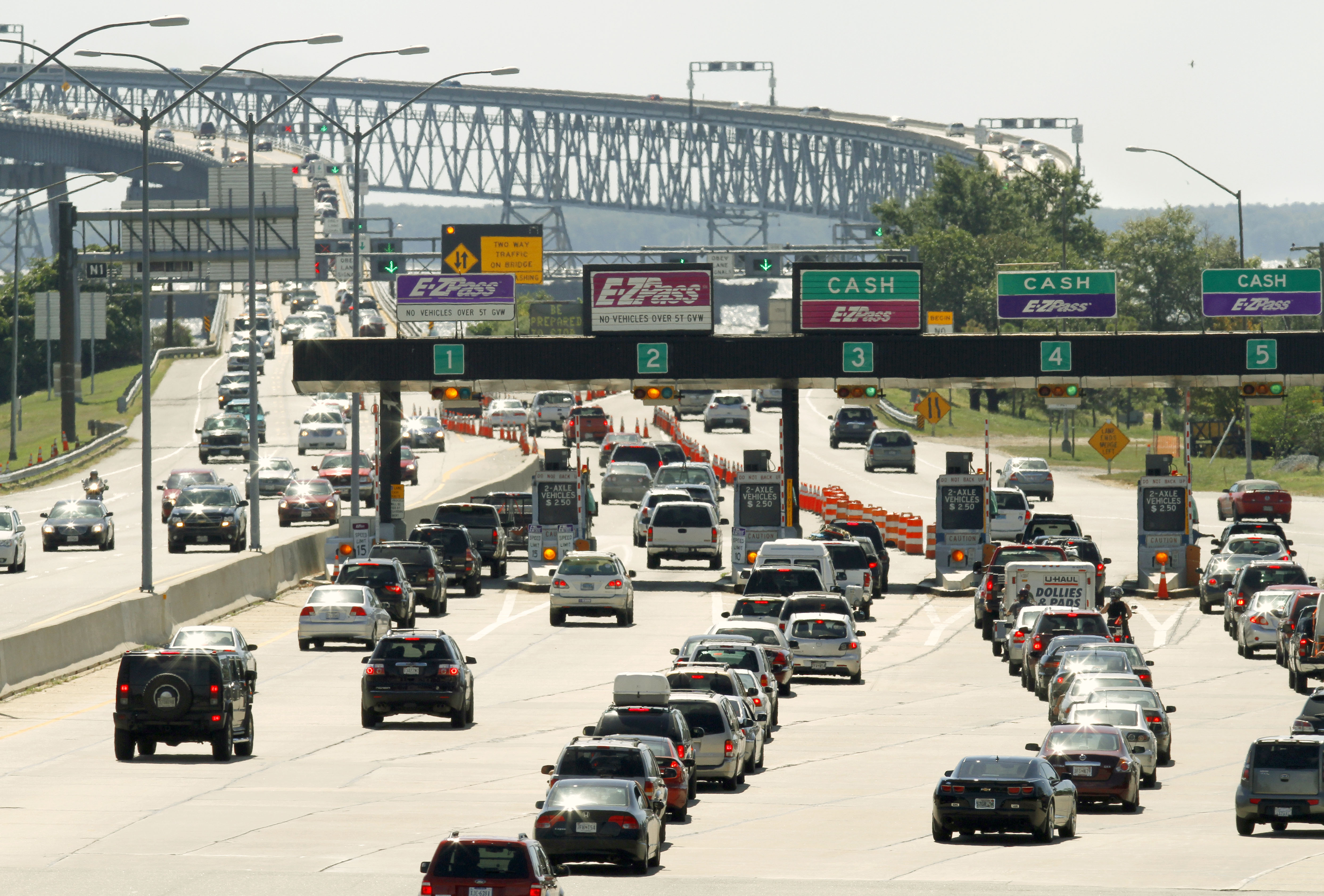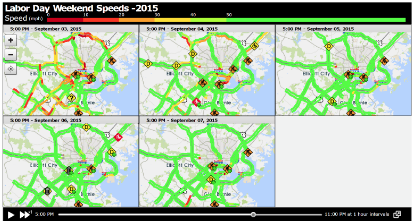Use Case:
Predict Holiday Travel Patterns
When an annual holiday causes traffic headaches, predicting holiday travel patterns and sharing with travelers on an agency webpage helps drivers understand their options before setting out on their trip.
When an annual holiday causes traffic headaches, predicting holiday travel patterns and sharing with travelers on an agency webpage helps drivers understand their options before setting out on their trip.
A good traveler information web page will inform drivers about typical congested conditions on routes from the previous year, suggesting off-peak hours or less-travelled routes as alternatives.
RITIS has years’ worth of data and several tools that you can use to help evaluate historic temporal and spatial congestion trends along roadways, to help predict future travel patterns and timing.

Every Labor Day weekend, the highways around Baltimore follow the same patterns of congestion as residents travel for the extended weekend. The Baltimore Metropolitan Council (a nonprofit organization for strategic collaboration) wanted to encourage travelers to adjust their departure times to avoid the worst congestion periods.
The Bay Bridge was the focus of attention, as more than 354,000 vehicles crossed the bridge in 2015 heading to and from the Eastern Shore.
The BMC created a page on their website, Reduce your Memorial Day weekend travel time by planning ahead with BMC’s 2016 traffic data. They included an interactive tool from RITIS that lets the public explore their preferred routes. The webpage was praised by local media outlets for clear, timely, actionable traveler information.
This animated, multi-day infographic allowed travelers to see how congestion changes during every hour for each day of the holiday weekend for the Baltimore area. You can zoom in and move the maps around to get to your exact route, and see what times would be the best to travel, or avoid.


From the preceding analyses, and coordination with The Maryland Transportation Authority (MDTA), these travel tips for the Labor Day holiday weekend:
Travel off-peak when heading to and from the Eastern Shore. The best times to travel the Bay Bridge this weekend include:
Using these visualizations for their traveler advisory website helped BMC to: